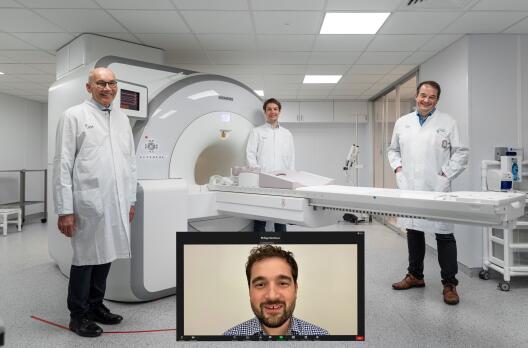PET/MR imaging using the FAPI radiotracer in breast cancer

CRC project leader and nuclear medicine specialist Dr. Philipp Backhaus and his research partners examined breast cancer patients, for the first time systematically using a radiotracer that binds to the fibroblast activation protein. In particular small cancer lesions could be newly detected, and in combination with MRI, the new PET imaging method influenced further treatment in three of 19 patients. The study, published in “Radiology”, was awarded “Paper of the Month” by the Medical Faculty.
Background and fundamental question of the publication
Breast MRI is an important tool for the evaluation of breast cancer. Its combination with positron emission tomography measurements of radiotracers in integrated PET/MRI may increase the specificity for cancer. 68Ga-FAPI-46 is a recently introduced PET radiotracer targeting the fibroblast activation-protein (FAP). FAP is ubiquitously expressed in the stroma of various tumors including breast cancer.
19 patients were analyzed that received combined breast of 68Ga-FAPI-46 PET/MRI and subsequent whole body PET/CT or PET/MRI to support the work-up of breast cancer. FAPI accumulated at primary tumors, lymph node metastases and distant metastases with very high intensity resulting in excellent contrast. In comparison to conventional imaging, FAPI-PET established novel breast lesions in 2 patients and established or substantiated involvement of additional areas of spread to lymph nodes in 7 patients. Additional distant metastases were detected in 2 patients. These findings changed the clinical management in 3 patients. In this context, the integrated combination of PET and MRI proved especially valuable and demonstrated synergistic effects.
This is the first systematic analysis of FAPI PET/MRI in breast cancer. Delineation especially of primary tumors appears to be superior compared to standard radiotracers such as 18F-FDG. Our results will support future prospective studies in breast cancer aiming to establish FAPI-PET/MRI in the clinical routine.
Links

